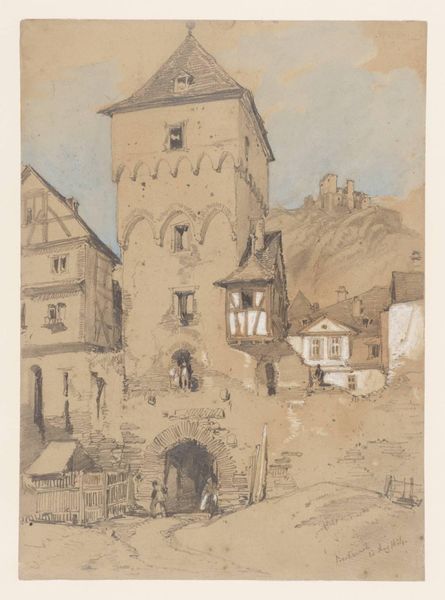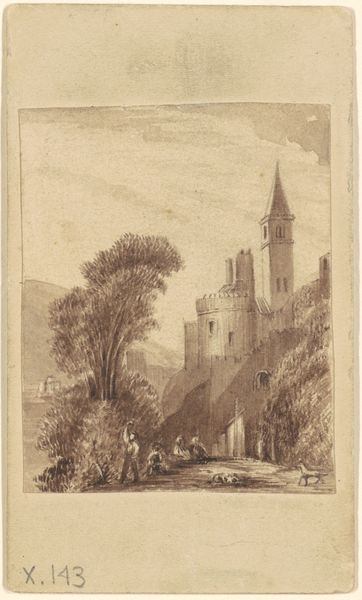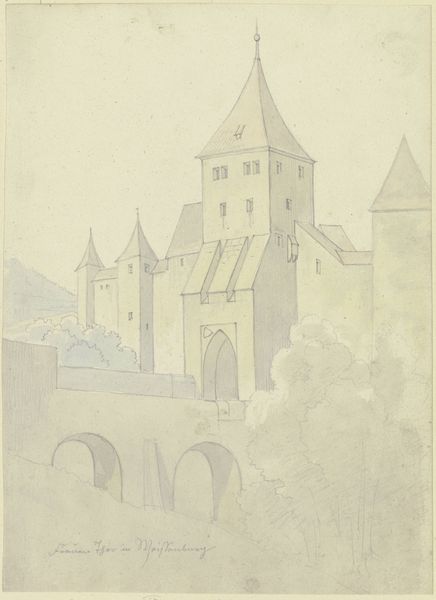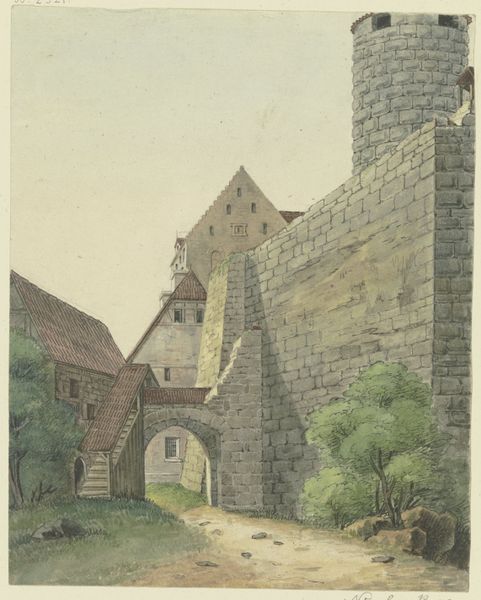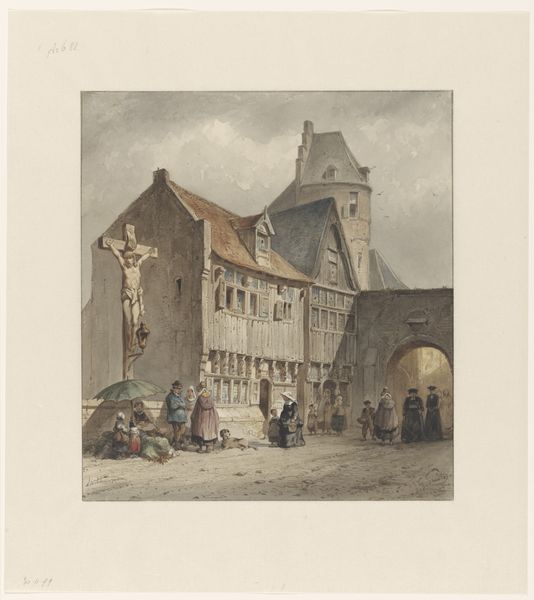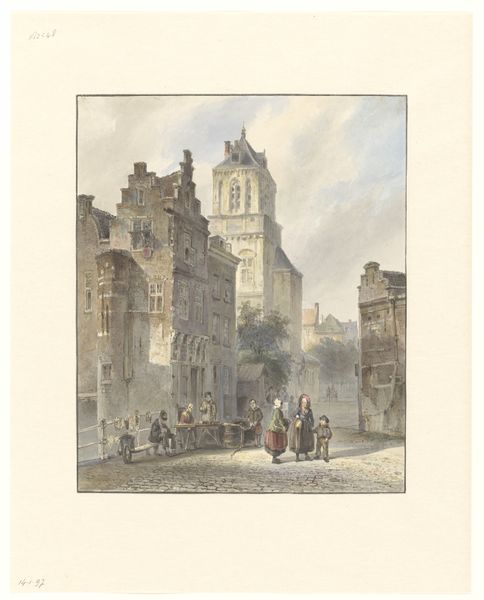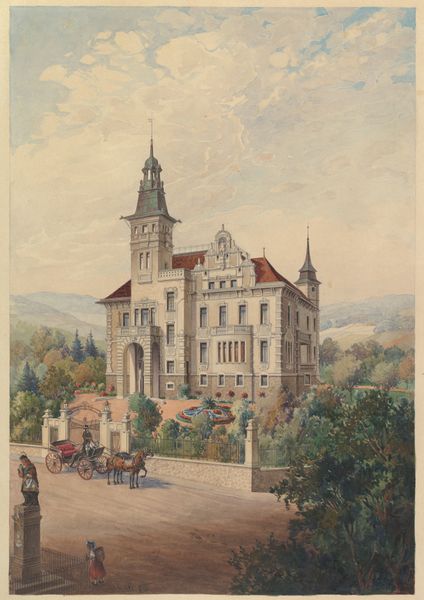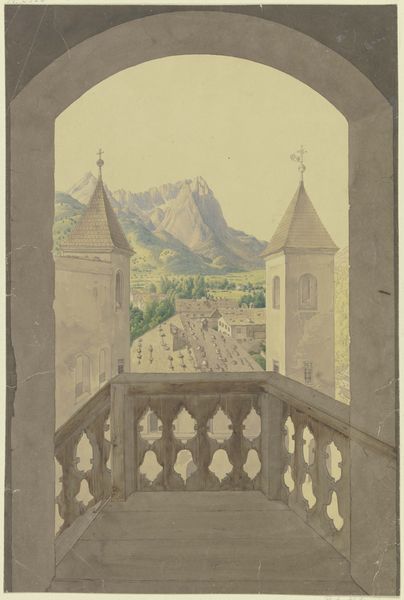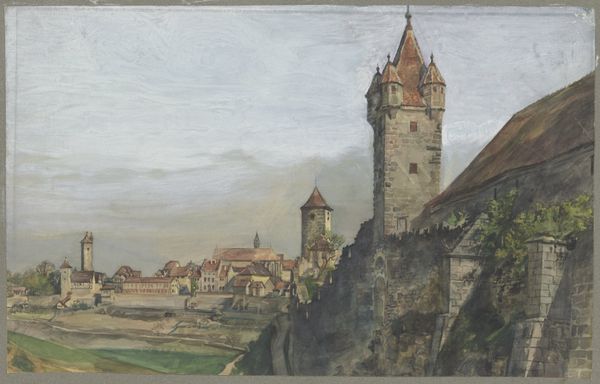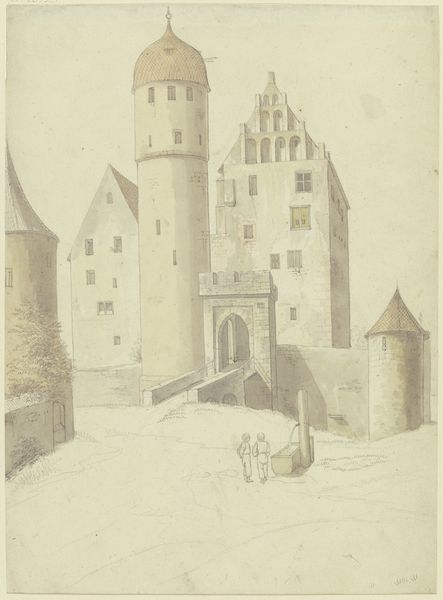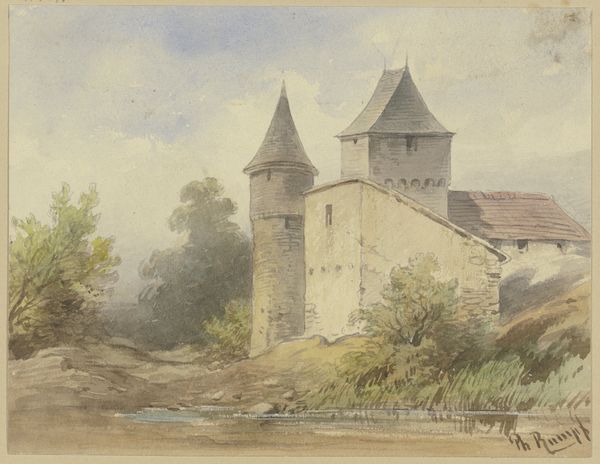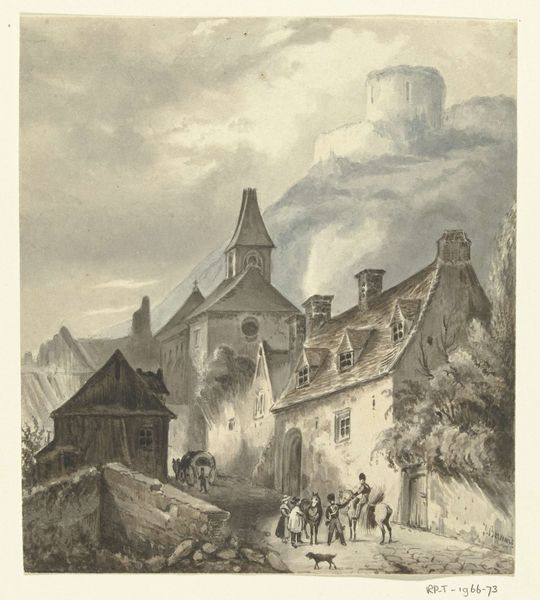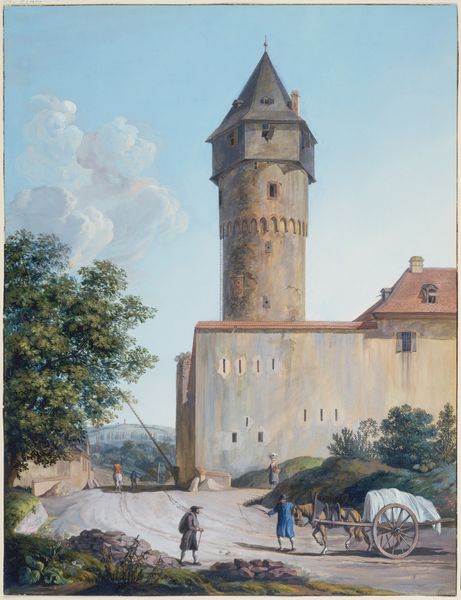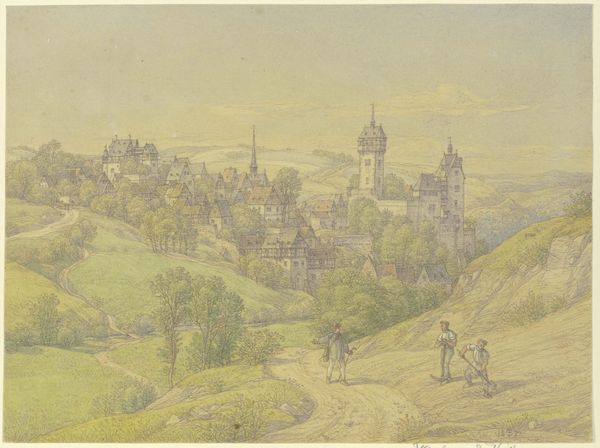
drawing, painting, paper, watercolor, architecture
#
drawing
#
water colours
#
painting
#
landscape
#
paper
#
watercolor
#
coloured pencil
#
cityscape
#
watercolour illustration
#
pencil art
#
architecture
Copyright: Public Domain
Editor: This watercolor by Hector von Günderrode, "Old Houses and a Tower," presents a cityscape in soft, muted tones. There's a dreamlike quality to it; the buildings almost seem to breathe. What visual stories do you think this artwork holds? Curator: The tower, ever-present and looming, anchors the scene to the past. It’s not just architecture; it's a sentinel, a visual memory. Notice how its height dwarfs the figures below; a subtle indication of power, perhaps religious or civic. The artist uses this contrast to explore the relationship between humanity and enduring structures of authority. Do you see a specific emotional tone embedded within that contrast? Editor: I think there's a sense of timelessness but also, a kind of quiet constraint – almost like the figures are aware of their smallness in comparison to history. The colors are quite muted, maybe creating that sense of things fading into memory. Curator: Exactly. Color and form communicate so much! The subdued palette creates a feeling of looking at a memory, a fragment of time. This recalls similar visual strategies found across cultural art traditions used to convey age and reverence through particular color scales. It could signify acceptance of tradition and societal structures...or, given the era of the artist, possibly hint toward a yearning for a different reality. Do you observe any other pictorial devices which might signify themes from history or from psychology? Editor: The buildings themselves seem almost personified, especially with those dormer windows like eyes looking out from the roofs. And the figures seem somewhat withdrawn. Curator: Indeed! That visual anthropomorphism links human and structural identity. Consider also the placement of the figures in relationship to the building in the foreground, possibly alluding to narrative from fairy tales or medieval legends where humans meet structural authority such as "giants" and other mythical entities, which are ultimately challenged or overthrown. So what final thoughts arise when pondering about the relation of the image's "icons?" Editor: It's like a frozen moment from a story where history and individual lives are subtly interwoven. Fascinating how a simple cityscape can evoke such complex themes. Curator: Absolutely. Pictorial structure reveals profound emotional and societal dynamics; visual art serves as the greatest witness!
Comments
No comments
Be the first to comment and join the conversation on the ultimate creative platform.
